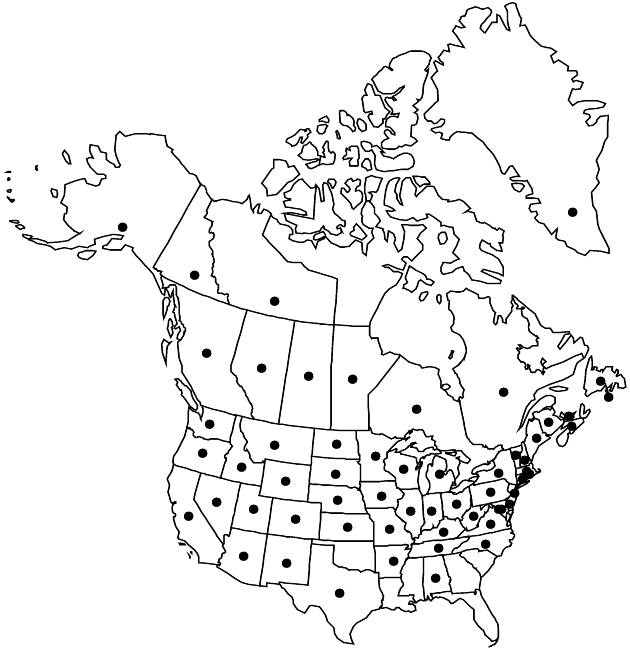Cirsium arvense
Fl. Carniol. ed. 2, 2: 126. 1772.
Perennials, dioecious or nearly so, 30–120 (–200) cm; colonial from deep-seated creeping roots producing adventitious-buds. Stems 1–many, erect, glabrous to appressed gray-tomentose; branches 0–many, ascending. Leaves: blades oblong to elliptic, 3–30 × 1–6 cm, margins plane to revolute, entire and spinulose, dentate, or shallowly to deeply pinnatifid, lobes well separated, lance-oblong to triangular-ovate, spinulose to few-toothed or few-lobed near base, main spines 1–7 mm, abaxial faces glabrous to densely gray-tomentose, adaxial green, glabrous to thinly tomentose; basal absent at flowering, petioles narrowly winged, bases tapered; principal larger cauline proximally winged-petiolate, distally sessile, well distributed, gradually reduced, not decurrent; distal cauline becoming bractlike, entire, toothed, or lobed, spinulose or not. Heads 1–many, borne singly or in corymbiform or paniculiform arrays at tips of main-stem and branches. Peduncles 0.2–7 cm. Involucres ovoid in flower, ± campanulate in fruit, 1–2 × 1–2 cm, arachnoid tomentose, ± glabrate. Phyllaries in 6–8 series, strongly imbricate, (usually purple-tinged), ovate (outer) to linear (inner), abaxial faces with narrow glutinous ridge, outer and middle appressed, entire, apices ascending to spreading, spines 0–1 mm (fine); apices of inner phyllaries flat, ± flexuous, margins entire to minutely erose or ciliolate. Corollas purple (white or pink); staminate 12–18 mm, (remaining longer than pappus when head fully mature), tubes 8–11 mm, throats 1–1.5 mm, lobes 3–5 mm; pistillate 14–20 mm, (overtopped by pappi in fruit), tubes 10–15 mm, throats ca. 1 mm, lobes 2–3 mm; style tips 1–2 mm. Cypselae brown, 2–4 mm, apical collar not differentiated; pappi 13–32 mm, exceeding corollas. 2n = 34.
Phenology: Flowering summer (Jun–Oct).
Habitat: Disturbed sites, fields, pastures, roadsides, forest openings
Elevation: 0–2600 m
Distribution

Introduced; Greenland, St. Pierre and Miquelon, Alta., B.C., Man., N.B., Nfld. and Labr. (Nfld.), N.W.T., N.S., Ont., P.E.I., Que., Sask., Yukon, Ala., Alaska, Ariz., Ark., Calif., Colo., Conn., Del., D.C., Idaho, Ill., Ind., Iowa, Kans., Ky., Maine, Md., Mass., Mich., Minn., Mo., Mont., Nebr., Nev., N.H., N.J., N.Mex., N.Y., N.C., N.Dak., Ohio, Oreg., Pa., R.I., S.Dak., Tenn., Tex., Utah, Vt., Va., Wash., W.Va., Wis., Wyo., native, Eurasia
Discussion
Cirsium arvense is one of the most economically important agricultural weeds in the world. It was introduced to North America in the 1600s and soon was recognized as a problem weed. Weed control legislation against the species was passed by the Vermont legislature in 1795 (R. J. Moore 1975). Canada thistle is now listed as a noxious weed in most areas where it occurs. It has very high seed production, and the runner roots readily survive the fragmentation that accompanies cultivation.
Numerous variants of Cirsium arvense have been named based upon such features as pubescence, extent of leaf division, and spininess. Although extreme variants can be strikingly different, they are connected by such a web of intermediates that there seems to be little value in according any of them formal taxonomic recognition.
Selected References
Lower Taxa
"fine" is not a number.